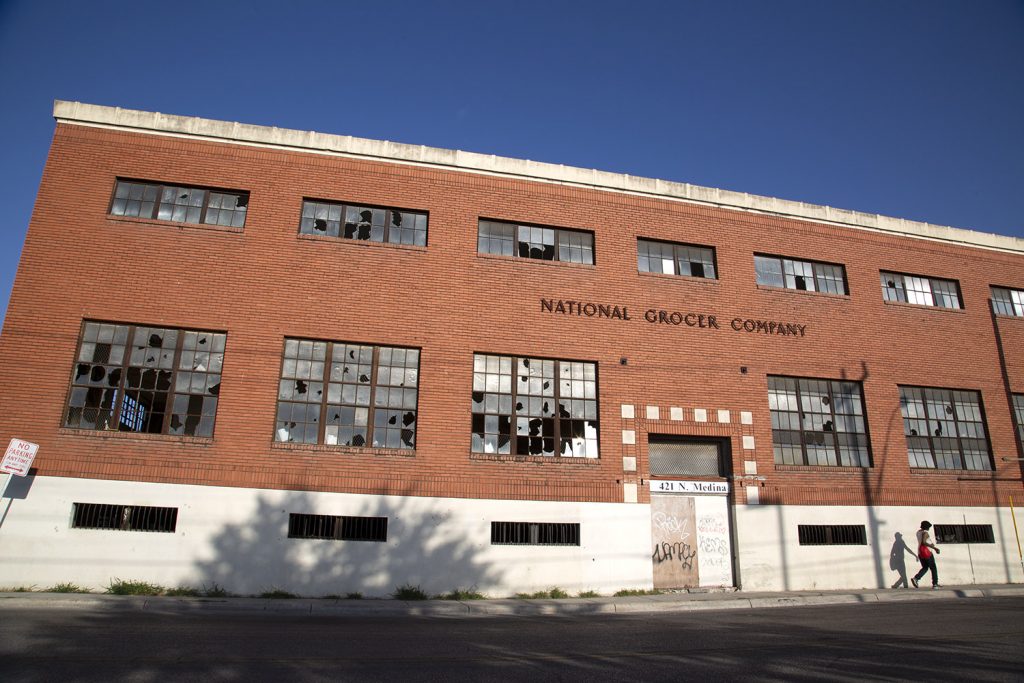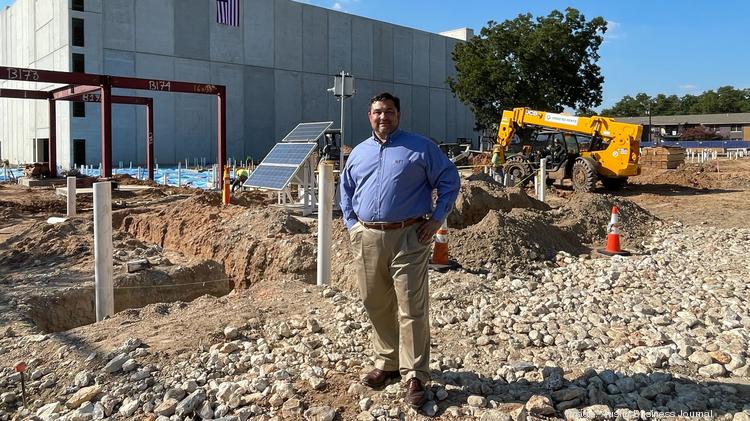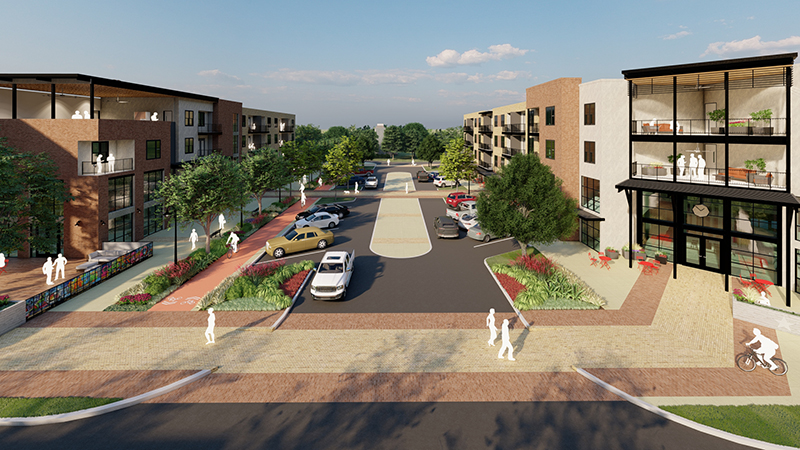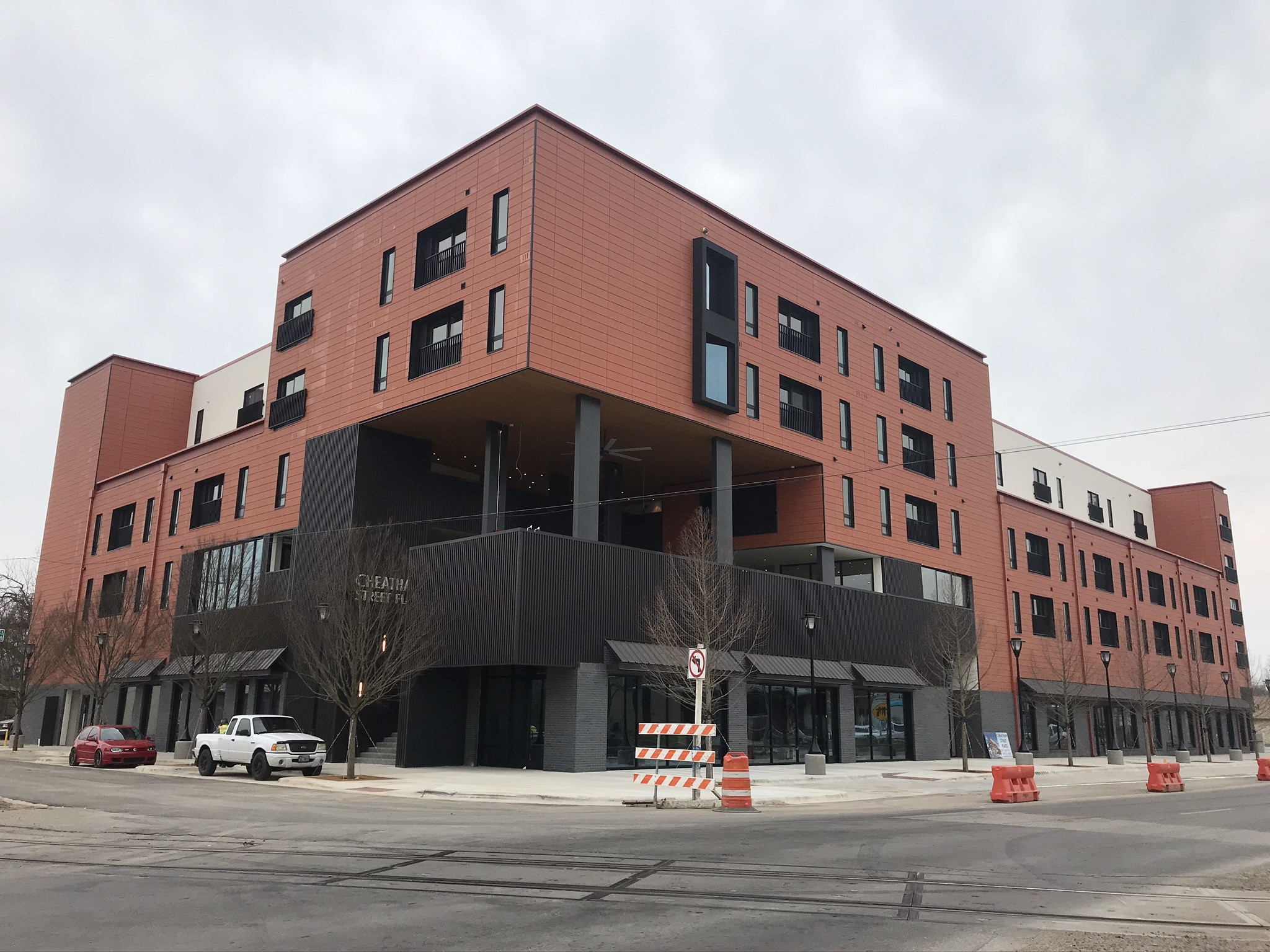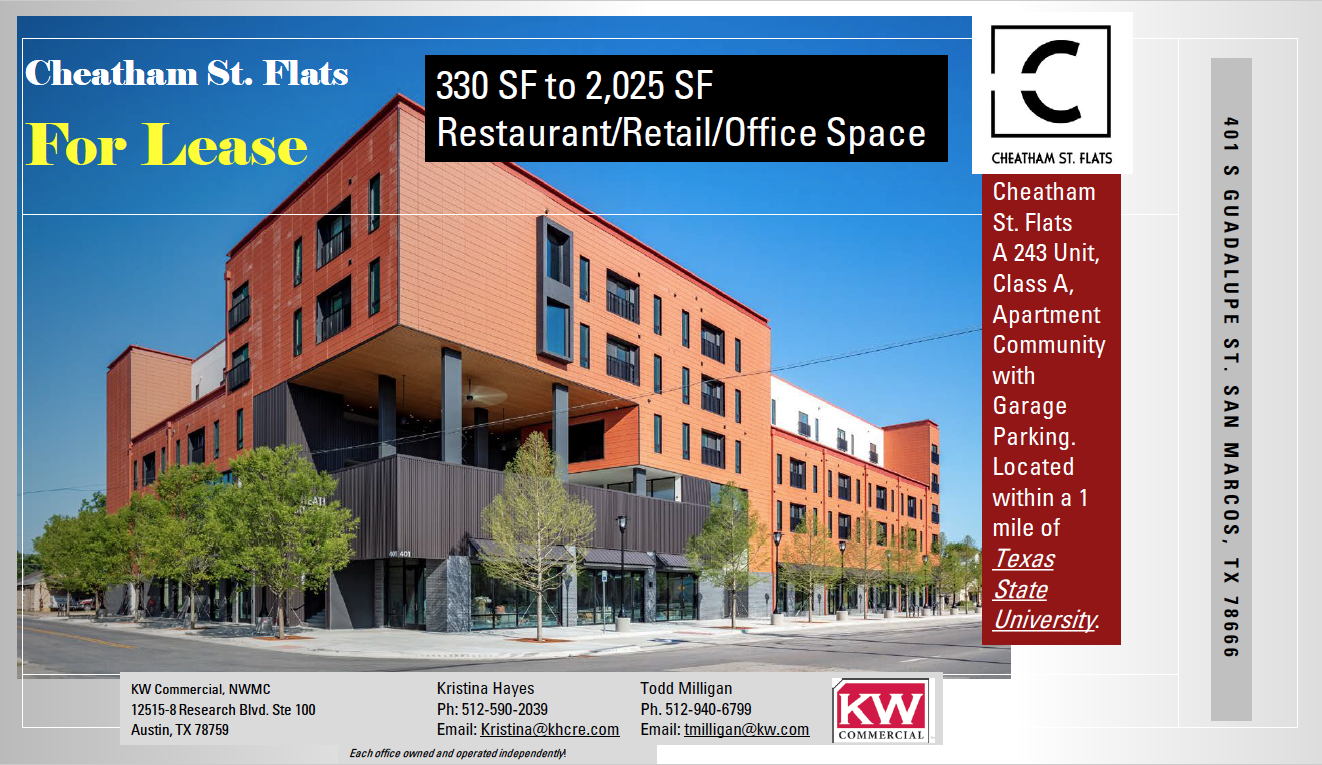By Richard Webner | @RWebner | Heron contributor
Sabot Development is building big in Austin, recently breaking ground on a 9.6-acre apartment and retail project along the city’s light rail system. It’s about to build big in San Antonio, too: The firm is close to locking down a loan to start construction on the 10-story Mira apartment tower just west of the Pearl, its managing partner Jim Young said.
Now, the Austin-based firm is setting its sights on the Cattleman Square area on the near West Side—one of the most blighted areas of the urban core.
Last week, Sabot Development bought the 103-year-old National Grocer Company building at 421 N. Medina St., which abuts the Scobey complex to the north; VIA Metropolitan Transit owns the Scobey and plans to redevelop it in partnership with the local firm DreamOn Group.
Sabot’s purchase also included roughly 3.3 acres of vacant land along the railroad tracks behind the Scobey and VIA’s headquarters in the Grand building. The previous owner of the properties was a partnership linked with the developer Gregory Schnurr of Austin.
Young said in a phone interview that Sabot doesn’t have specific plans for the site. He intends to reach out to the area’s residents to hear what they would like to see done there.
“We’re looking at everything from mixed-use, retail, event space, residential,” Young said. “I would prefer a team approach, which is why I haven’t settled on a specified path. I always find that talking to neighbors will come up with ideas that developers didn’t know were of interest.”
Young, who grew up in San Antonio before settling in Austin after a career in the U.S. Army, said that his interest in history made the three-story, 70,400 square-foot building on North Medina an attractive purchase. The building, with its broken windows and a “for lease” sign on its side, has sat vacant since at least the late 2000s. It was constructed in 1919, according to the city of San Antonio’s Office of Historic Preservation.
“I’m a little bit of a history nerd,” Young said. “I just thought that it looked a lot like an old Chicago warehouse building, and thought it would be good to find an adaptive reuse for it.”
The building “needs a lot of love, but the bones are there,” he said.

Difficulties building in Cattleman Square area
Since buying the six-building Scobey industrial complex in 2017, VIA has selected the local firm DreamOn Group, co-founded by former Zachry Corp. Vice President Rene Garcia, to build what it has described as a “transit-oriented community,” with residential, retail and office components. The agency’s Centro Plaza transit hub is across the street.
VIA and DreamOn have entered an “exclusive negotiating agreement,” agency spokeswoman Lorraine Pulido said in an email on Wednesday. Other details of the project, such as its expected cost and its construction timeline, are still being worked out, she said.
The Scobey has defied several attempts at redevelopment since local developer Ed Cross purchased it in 1999. The Cattleman Square area as a whole has remained largely untouched by the wave of growth that has transformed much of San Antonio’s urban core over the last 15 years, even as the downtown campus of the University of Texas at San Antonio has begun to expand, and Weston Urban continues to broaden its footprint in west downtown.
The reasons for that are complicated. This area that flanks North Frio is marred by a proliferation of derelict buildings, parking lots and empty fields. A large number of government offices and facilities have been located there—including the hulking Bexar County Adult Detention Center, across the railroad tracks from Sabot’s purchase—acting as barriers in the urban fabric.
There are large numbers of homeless people in the neighborhood, as Haven for Hope is located kitty corner to the National Grocer Building, opposite the tracks; and property owners say there are problems with crime and defecation in the streets.
Local developer David Adelman, known for building The ’68 apartments at Hemisfair, among other projects, has struggled to find a use for the historic Rich Book building which he co-owns on West Houston Street. Nothing has come of the plans which he revealed last year to tear down the building to build a 122-unit apartment complex.
The West Side has a well-organized preservation community, galvanized by urban renewal efforts of past decades which tore down large swathes of historic homes and other buildings. Last year, for example, the future of the historic Whitt Printing building pitted its owner, the Lim family which also owns the adjacent Golden Star Café, against West Side preservation groups.
In an interview with the Heron late last year, Adelman described the neighborhood as “a challenging area.”
“The public sector came in and did urban renewal 40 years ago and just wiped out an entire neighborhood,” Adelman said. “And what they built back was not good: You have a mix of public buildings, you’ve got a county jail and bail bondsmen, you’ve got the Robert (B.) Green (hospital). It’s a smattering of random buildings. You don’t have a real neighborhood there. They wiped out a neighborhood and replaced it with just a series of buildings here and there. It’s too much missing.”
[ Related: Developer Adelman asks to demolish old Cattleman’s Square Tavern for 122-unit apartment building | May 18, 2021 ]
Asked whether he was ready to abandon the Rich Book site, he said, “Not only yes, but hell yes. I will wave the white flag of surrender.”
In a response late Wednesday, Adelman said, “Nothing going on there at present time but we would engage with a developer with a vision anytime. Or, happy to entertain a sale. We do have a great site plan that would accommodate workforce housing, however, it would require the demolition of the building. I am a strong preservationist as you know, but that building is not salvageable with market economics. It would require strong incentives or philanthropy and given I am unaware of any philanthropists saving old buildings without significant historical qualities such as important events or unique architecture that leaves us with the public sector. And I don’t think the taxpayers should be footing the bill for this one.”
